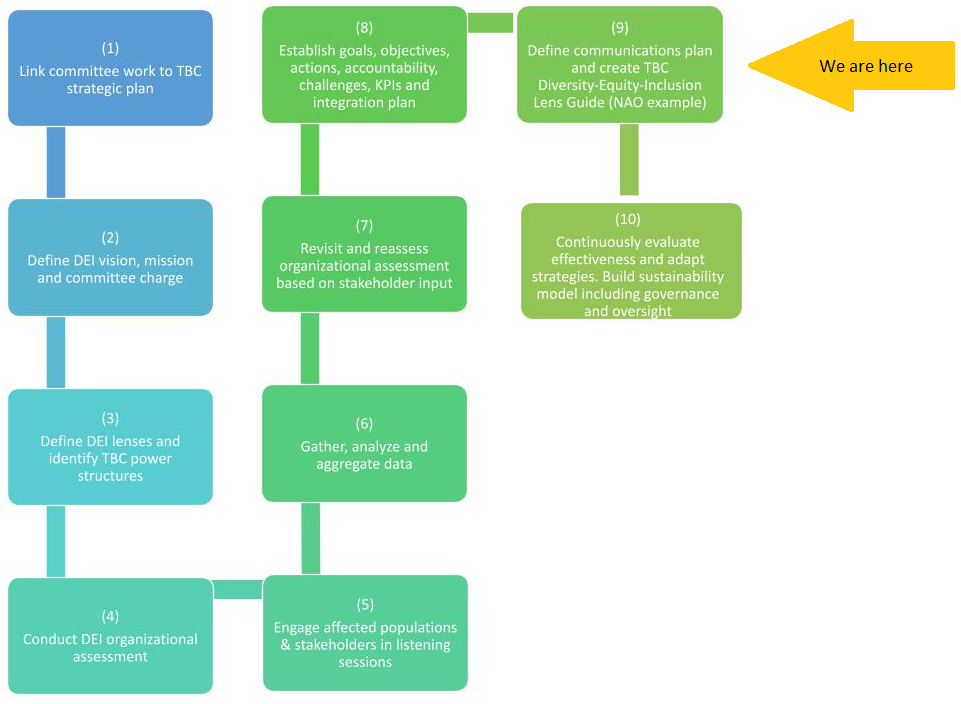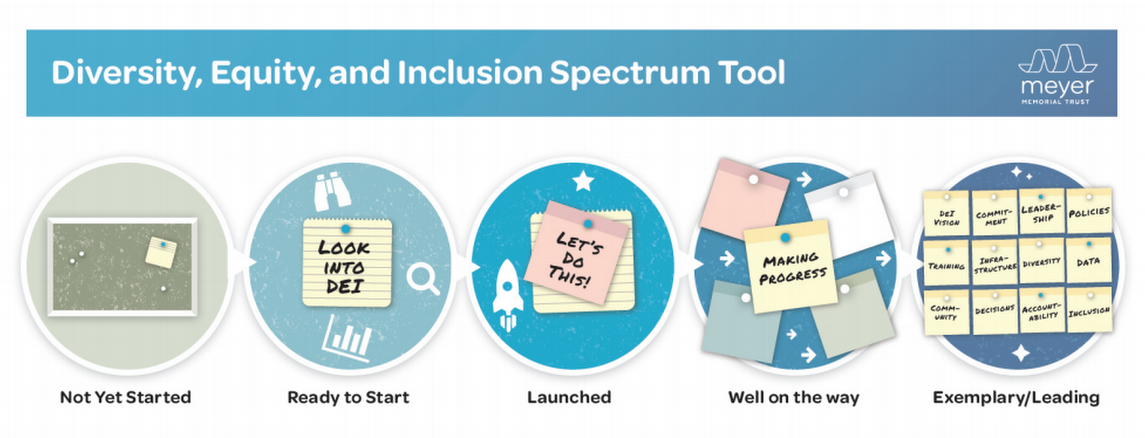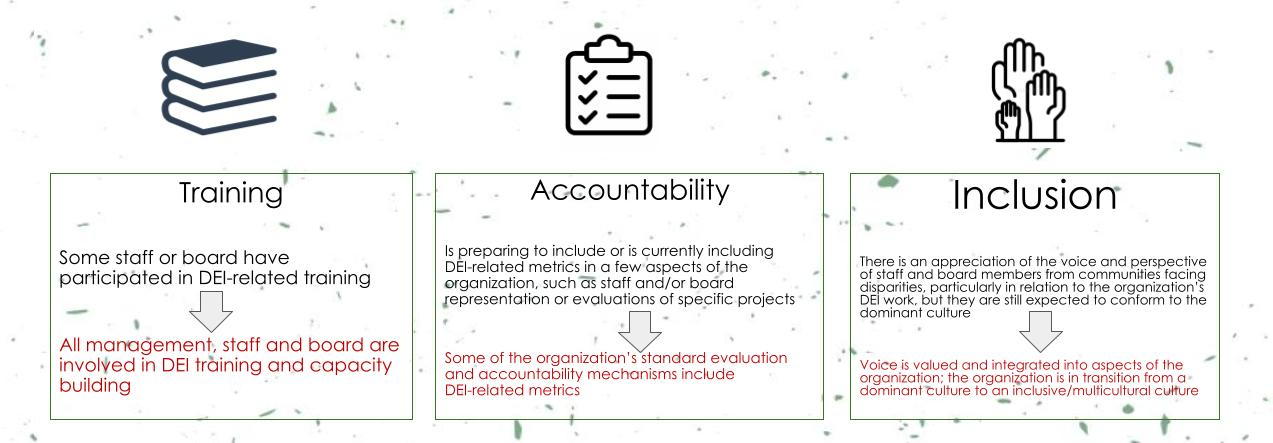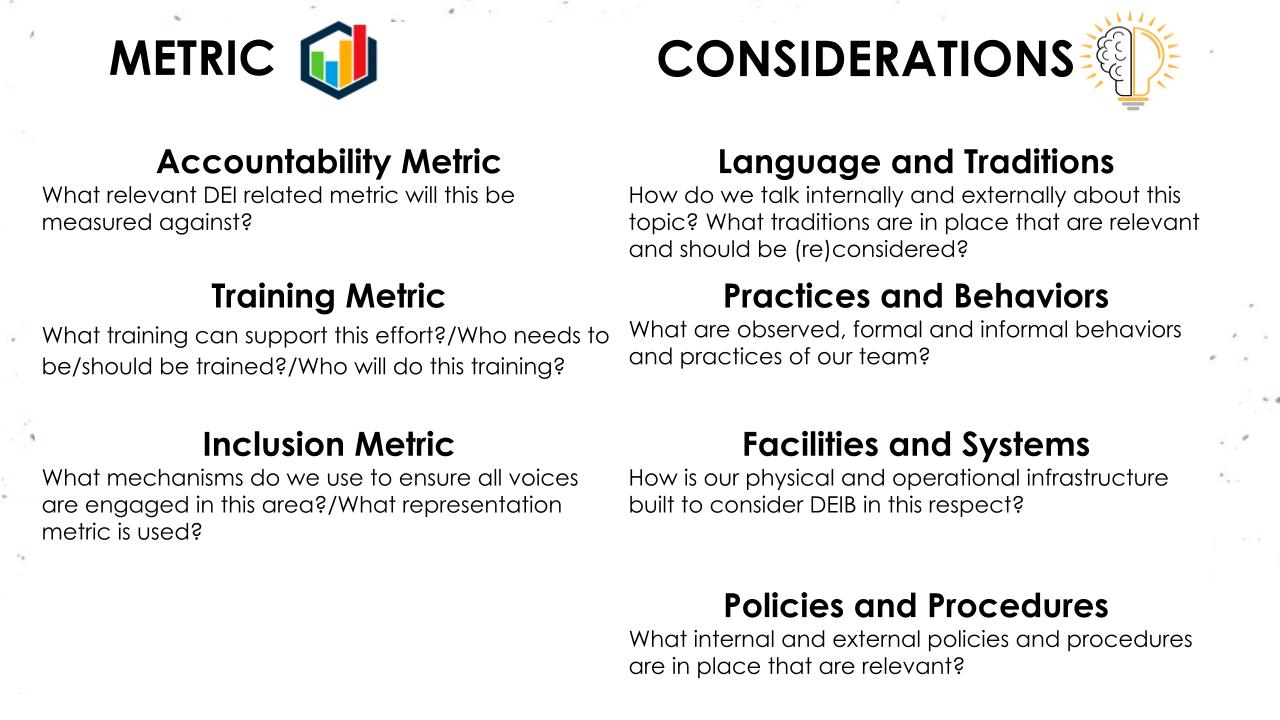diversity, equity, inclusion, and belonging
Our 2019 Strategic Plan affirmed our core principles and highlighted the importance of Diversity and Belonging, which have long been a part of our philosophy throughout our 137 years. In June 2020, we made a commitment to be actively anti-racist and to do our part in creating a truly just world. This includes making Diversity, Equity, Inclusion, and Belonging (DEIB) the primary lens through which we examine all our work, from program design to organization operations.
We will develop future generations of diverse, informed, empowered, intentional and influential citizens who create a bias-free and anti-racist world.
We create diverse, equitable and inclusive spaces with unencumbered access, where all youth, families and team members are valued, included and empowered.
This is central to our commitment to delivering accessible outdoor education and programming to young people and to the communities in which we work and serve. We act with intent to challenge and dismantle the global historic systems of oppression impacting all of society, our workforce and the entire Trail Blazers’ community. By understanding the structures of power and privilege, we work passionately and emphatically to address all forms of discrimination – age, income, ability, ethnicity, gender identity and expression, national origin, religion, and sexual orientation – across every aspect of our business and among everyone we touch and serve.
Committee Members
How are we Doing?
In 2020, Trail Blazers made a commitment to being an actively anti-racist organization and we have spent the past year laying the groundwork needed to support this work and move us forward.
We started by lifting up DEI (Diversity, Equity, and Inclusion), which was one of the four Strategic Lenses identified in our Jan 2020 Strategic Plan (link), as our primary lens and then adding “B” for Belonging. To guide our work and to hold us accountable to our goals, we convened a DEIB committee that comprises board members, staff, an alumna, a community partner, and supported by expert consultants.
We established a path to guide us along this work.

To institutionalize DEIB as a core and essential part of Trail Blazers, we integrated DEIB into our Mission and Vision statements, ensuring that it will guide how we govern, lead, communicate, operate, and interact. Furthermore, as our Primary Strategic Lens, DEIB will serve as our primary guide as we continue to operationalize our Strategic Plan and monitor its effectiveness through 2025.
We are currently at Step 9 on this path. The above tabs describe some of the work in each one of the steps and where we are going.

Next, the DEIB Committee is assessing every aspect of TBC’s business and infrastructure – People, Partnerships, Communications, Fundraising, Operations, Financials, Programming, and Culture – with the goal to build a roadmap to reach cultural proficiency and exemplary status. We chose the Meyer DEI Spectrum Tool for assessing our current state.

The tools functions as our guide for assessing TBC’s progress on the path from “Not Yet Started” to “Launched” to “Well Underway” to “Exemplary” for each of the following 12 components: DEI Vision, Diversity, Commitment, Data, Leadership, Community, Policies, Decisions, Infrastructure, Accountability, Training, and Inclusion.
The findings, based on the committee’s assessment, are that Trail Blazers has a status of either Launched or Well Underway for a majority of the components assessed. The exceptions were Accountability, defined as the inclusion of DEIB-related metrics across all mechanisms, and Training, defined as fostering ongoing training, growth and leadership among management, staff and board.

Our next steps are to develop specific and measurable goals to move Trail Blazers to “Exemplary” across all 12 components, with priority given to Accountability, Training, and Inclusion.
This includes engaging our stakeholders and forming formal structures – such as internal committees and affinity groups – to continuously inform the work, and ensure we create a sustainable model.
Additionally, we have established 4 internal areas of consideration, to deepen and focus our conversations.

The work to deeply integrate DEIB into our organization takes time, practice and consistent attention. Here are some of the things were are working on:
LANGUAGE AND TRADITIONS
Like many summer camps, appropriation of Native American language was common. Some terminology has already been changed: for example, “pow wow” – the time spent around the fire at the end of the day is now called the “Sunset Circle”.
We are asking your input in developing a comprehensive list of language and tradition items subject to a DEIB consideration. We are thinking about any names, conventions, songs, traditions and habit etc., we can think of that perhaps ought to be reconsidered. The purpose of this list is NOT to discuss changes, but merely to collect items that you feel either should/could be subject to change, or perhaps items you feel should not be subject to change. This document is also NOT a discussion forum, so we ask you not to comment on items, but merely to list yours. You can access the document HERE.
WEBSITE ACCESSIBLITY
We have added widgets to our site to help ensure information is available to people who speak languages other than English as well as to improve our ADA and WCAG compliance.
TRAINING
DEIB training is an integral part of on-boarding and continual professional development trainings for Program Staff.
DEIB at Trail Blazers is not a top-down process, it is also from the ground up. Full-time staff at Trail Blazers participate in DEIB work in Onboarding/Hiring, Training, Programs, and Communications to ensure that our efforts are truly integrated into all parts of our organization and at all levels. Below are the staff priority projects for 2024:
ONBOARDING/HIRING
GOAL: Ensure that new staff feel that Trail Blazers is a place where they are included and feel a sense of belonging
TRAINING
GOAL: Ensure staff are equipped with the knowledge and skills needed to deliver inclusive programs that support diverse campers needs and experiences
PROGRAMS
GOAL: Integrate more cultural representation into campers’ learning experience
GOAL: Ensure that all Trail Blazers sites have access to programing that creates the enriching experience that young people deserve
COMMUNICATIONS
INTERNAL COMMUNICATIONS
GOAL: Ensure all staff are aware of Trail Blazers DEIB work
EXTERNAL COMMUNICATIONS
GOAL: Improve website accessibility
GOAL: Keep Trail Blazers community abreast of our DEIB progress
Guided by the 2025 Strategic Plan, Trail Blazers maps out priorities on an annual basis, with the goal of being a ‘Best in Class’ organization.
There is still plenty of work to be done as we move to “Exemplary”. We are committed to integrating practices into our organization and building DEIB muscle memory, so that we progress towards the day when DEIB integration is not needed as as a separate goal because it is a deeply integrated reality at Trail Blazers.
The DEIB Committee’s role is monitor progress and help develop the specific measures needed to hold ourselves accountable, including periodic assessment with the tools described here.
“Building Values for Life” is the Trail Blazers tagline – it reflects how we view ourselves as an organization and our place in this world. We believe it is our job to actively engage in building essential values and create positive impact. Motivated by this mission, we remain committed to moving forward and will continue to share updates as we progress. We invite YOU, our community, to join us in this on-going work. Keep on the lookout for opportunities to participate in listening sessions and committees to keep us centered on what matters most – our community.